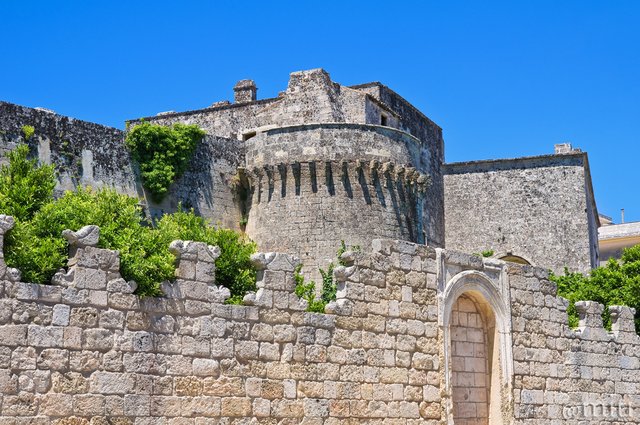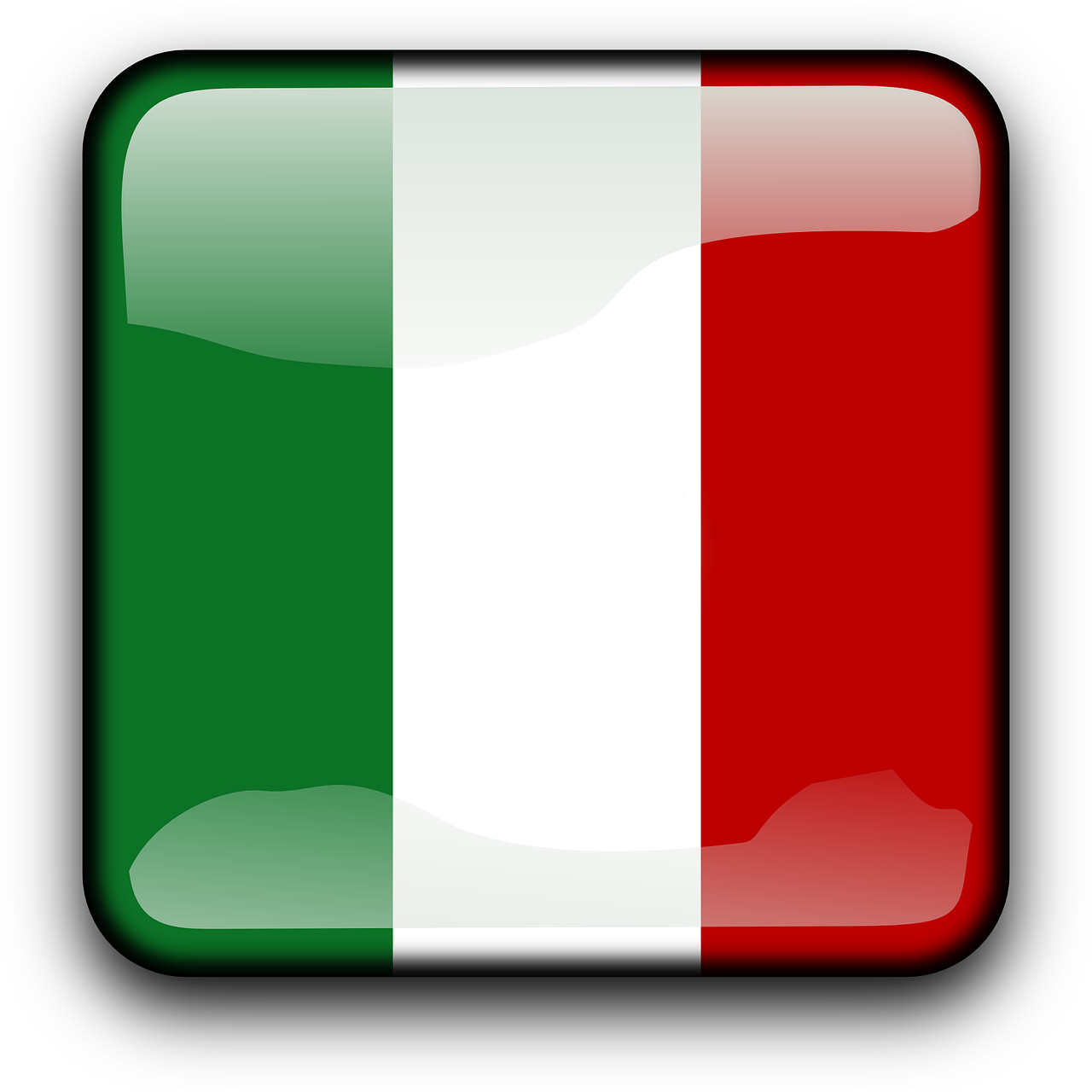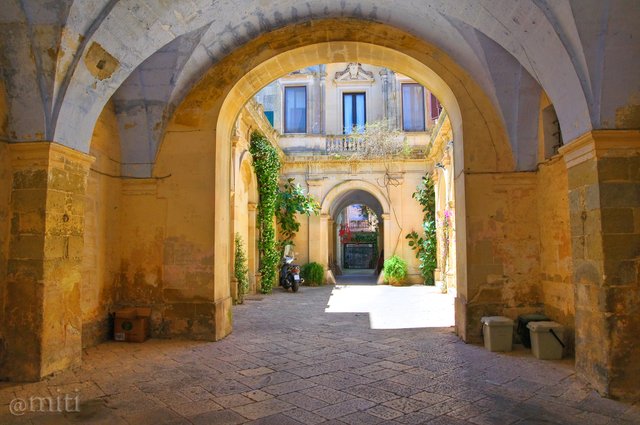A Journey through Italy: one photo every day #141 - POGGIARDO [ENG/ITA]

The Ducal Palace (Author's photo - All rights reserved)
Il palazzo Ducale (Immagine dell'autore - tutti i diritti sono riservati)



Ciao a tutti,
questo è un viaggio attraverso l'Italia. Posterò una foto al giorno con una brevissima descrizione. Spero vi piaccia!

Poggiardo è un piccolo borgo in provincia di Lecce, nella regione meridionale italiana della Puglia. Si tratta di un piccolo centro agricolo nella penisola salentina, che offre spunti per una visita culturale al suo centro storico e la possibilità di conoscere la cultura messapica visitando il Parco Archeologico di Vaste.
Vaste fu abitata sin dall'età del ferro, raggiungendo il suo massimo sviluppo verso la metà del IV secolo aC, dopo la sconfitta messapica della colonia greca a Taranto. Ci sono importanti reperti di questo periodo: una necropoli e tombe contenenti tesori funerari.
La città divenne romana dopo la sconfitta della Lega greco-messapica, comandata dal re Pirro (265 aC), seguendo il corso storico della Repubblica e dell'Impero; alla fine dei quali vi furono invasioni barbariche da parte dei Visigoti e dei Vandali.
Dopo un breve periodo del regno degli Ostrogoti (496-535) e della guerra greco-gotica (535-553), Bastae divenne un centro bizantino per molti secoli.
Essere parte dell'Impero romano d'Oriente lo pose al centro degli scontri tra Normanni e Bizantini a partire dall'XI secolo, fino a un triste epilogo: la sua distruzione da parte del normanno Guglielmo Malo nel 1156.
Qui è dove è iniziata la storia di Poggiardo, attraverso la distruzione di Bastae e le ultime 3 case rurali sopravvissute. La città passò sotto la dominazione sveva (1194) e sotto gli Angioini (1266), poi gli Aragonesi dominarono la città (1442-1502) e costruirono le sue mura cittadine.
Passò poi agli spagnoli (1506-1734) e divenne sede episcopale nel 1537, conferendogli maggiore importanza tra i centri della Puglia. Fu infine passato ai Borboni che amministrarono fino alla sua unificazione al Regno d'Italia (1861).
Passeggiando per il centro storico, i visitatori si troveranno davanti alla Chiesa Madre, dedicata al patrono Sant'Antonio da Padova, un edificio rococò con un'elaborata facciata realizzata nel 1728.
Merita una visita la chiesa rupestre della Vergine Maria degli Angeli, un tempo completamente affrescata. Gli originali possono essere ammirati al Museo degli affreschi.
Poggiardo svela subito il suo cuore storico attraverso numerosi edifici nobiliari del centro (Palazzo Episcopo, Palazzo Circolone, Palazzo Cotrino, Palazzo Sticchi) e il suo principale esempio di architettura civile nel Palazzo Ducale apparteneva alla famiglia Guarini, il Sedile e il campanile costruito nel 1800.
Villa Episcopio ospita il Museo della Cripta con frammenti di alcuni interessanti affreschi risalenti al XII secolo, in precedenza situati all'interno della Cripta di Santo Stefano.
Nelle vicinanze di Poggiardo si possono vedere i resti dell'antico centro messapico di Vaste e la Chiesa Rupestre di Santo Stefano, contenente preziosi affreschi medievali.
Cosa vedere: il Centro storico, il Palazzo Ducale, la Chiesa Madre, la chiesa rupestre della Madonna degli Angeli, il Palazzo Episcopio, il Palazzo dei Circoletti, il Palazzo Cotrino, il Palazzo Sticchi, il Palazzo Sedile, il campanile, la Chiesa dell'Immacolata, la Chiesa di San Francesco d'Assisi, il Museo Archeologico della Civiltà Messapica, il Parco dei Guerrieri di Vaste.

Hello everyone,
I began a Photo Journey through Italy. I will post one photo every day with a little note of explanation. I hope you like it!

Poggiardo is a small town in the province of Lecce, in the southern Italian region of Puglia. It is a small agricultural centre in the Salento peninsular, which offers ideas for a cultural visit to its historical centre and the chance to learn about the Messapian culture by visiting the Archaeological Park of Vaste.
Vaste was inhabited since the Iron Age, reaching its maximum development towards the mid 4th Century BC, after Messapian defeat of the Greek colony in Taranto. There have been finds from this period: a Necropolis and tombs containing funerary treasures.
The City became Roman after defeat of the Greek-Messapian League, commanded by King Pirro (265 BC), following the historical course of the Republic and the Empire; at the end of which there were barbaric invasions by the Visigoths and Vandals.
After a brief period of Ostrogoth Reign (496-535) and the Greek-Gothic War (535-553), Bastae became a Byzantine centre for many centuries.
Being part of the Eastern Roman Empire put it at the centre of clashes between the Normans and Byzantines beginning during the 11th Century, until a sad epilogue: its destruction by the Norman Guglielmo Malo in 1156.
Here is where the history of Poggiardo began, through destruction of Bastae and the last 3 surviving rural homes. The City passed under Swabian domination (1194) and under the Angioini (1266), then the Aragonese then dominated the City (1442-1502) and built its City walls.
It then passed over to the Spanish (1506-1734) and became and Episcopal seat in 1537, giving it more importance among centres in Puglia. It was finally passed to the Bourbons who administered until its unification to the Reign of Italy (1861).
Walking through the old town visitors will find themselves in front of the Mother Church, dedicated to the patron Saint Anthony of Padua, a Rococo building with an elaborated facade made in 1728 .
Worth a visit the cave church of Virgin Mary of Angels, a completely frescoed time. The originals can all be admired at the Museum of Frescoes.
Poggiardo immediately unveils its historical heart through numerous noble buildings in the centre (Palazzo Episcopo, Palazzo Circolone, Palazzo Cotrino, Palazzo Sticchi) and its main example of civil architecture in the Ducal Palace belonged to the Guarini family, the Sedile and bell-tower built in 1800.
Villa Episcopio houses the Crypt Museum with fragments of some interesting frescoes dating back to the XII century onwards previously located inside the Crypt of Santo Stefano.
Nearby Poggiardo the remains of the ancient Messapian centre Vaste can be seen and the Rupestrian Santi Stefani Church, containing precious Medieval frescoes.
Thing to see: the Historical centre, the Ducal Palace, the Mother Church, the cave church of Virgin Mary of Angels, the Episcopio Palace, the Circolone Palace, the Cotrino Palace, the Sticchi Palace, the Sedile Palace, the bell-tower, the Church of the Immaculate Virgin, the Church of Saint Francis of Assisi, the Archaeological Museum of the Messapian Civilization, the Warriors’ Park of Vaste.

| Tipo di foto / Category | Paesaggio / Landscape view |
| Esposizione / Settings | 1/250 sec, ISO 250, f/10 |
| Camera | Nikon D5000 |
| Lente / Lens | Tamron SP 17-50mm f/2.8 XR Di II LD |
| Filtro / Filter | Polarizzatore Hoya / Hoya Polarizing filter |
| Cavalletto / Tripod | Manfrotto MKC3-P01 |
| Località / Location | Poggiardo (Lecce), Italia |
| Software | Photoshop / HDR |


Alleyway in the historical center (Author's photo - All rights reserved)
Vicolo del centro storico (Immagine dell'autore - tutti i diritti sono riservati)
as always brilliant
Congratulations, Your Post Has Been Added To The Steemit Worldmap!
Author link: http://steemitworldmap.com?author=miti
Post link: http://steemitworldmap.com?post=a-journey-through-italy-one-photo-every-day-141-poggiardo-eng-ita
Want to have your post on the map too?
Greetings friend miti, beautiful The Ducal Palace and the Alley in the historic center has good architecture. :)
Hi my friend, this is a very wonderful place!
Wao Very impressive photography,This old building looks so beautiful,and small plants looks so attractive,very great information,Thanks for sharing this valuable post,
You're are welcome!
@ miti nice picture ,can u add more picture of the same fort to get better idea of the complete fort?
You got a 37.83% upvote from @ocdb courtesy of @miti!
Congratulations, thank you for showing us: geography, history and culture of Italy through your photos.
A very beautiful place indeed.
nice picture
Wow!!! It looks awesome.
Very impressive photography. Feel like you have captured the whole beauty in your camera.
It looks like,your photos decorated with colors, that refresh the eyes.
This is one of the most beautiful photography or post I have ever seen or upvoted.
Thanks for sharing this post with us.
Keep-on sharing, Eagerly waiting for your next post.